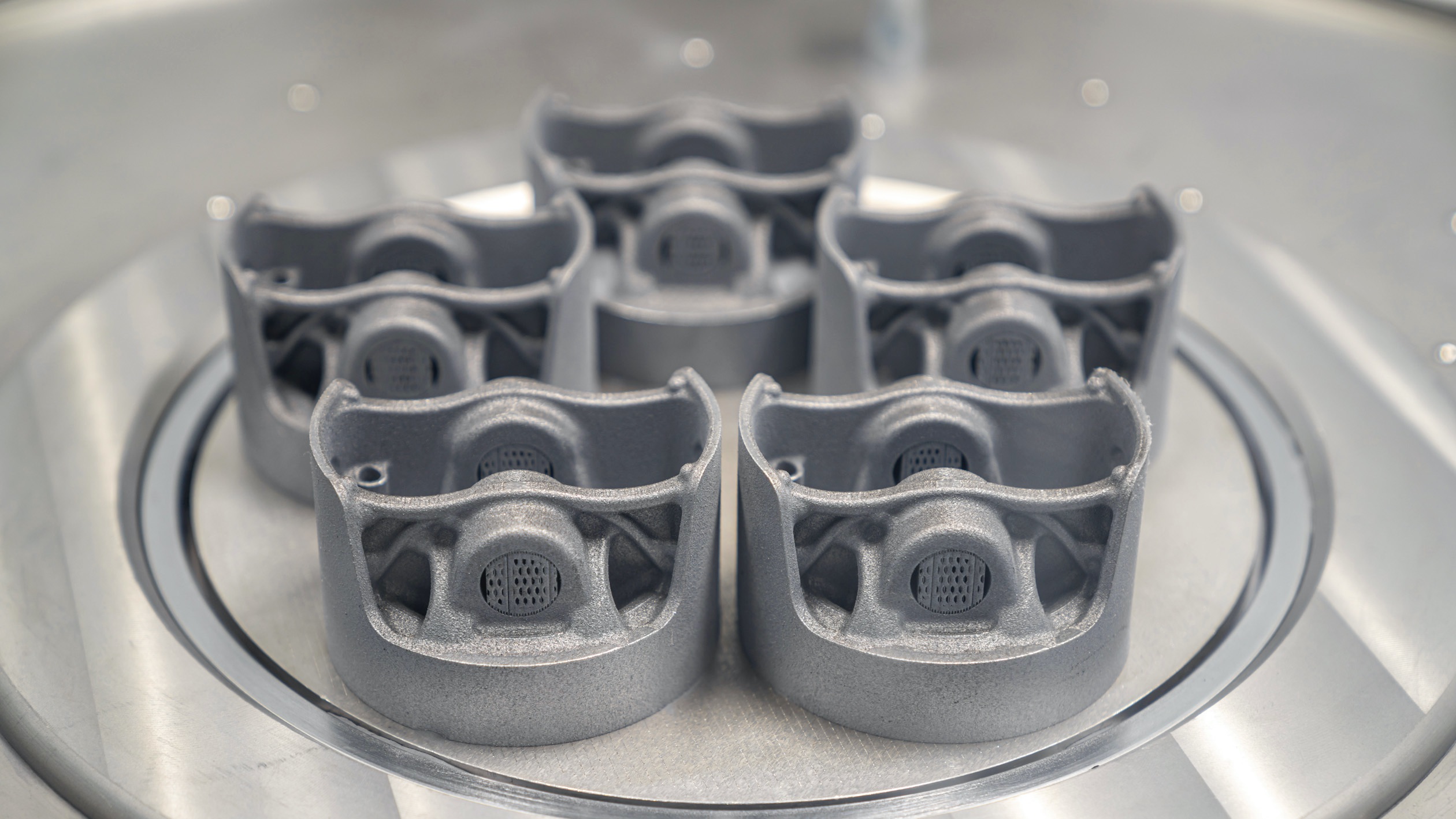
Porsche says that, for the first time, the pistons in its GT2 RS sports car have been produced with a 3D printer.
According to the company, 3D printing allows the pistons to have a structure that can cope better with the loads acting on the components. As a result, the pistons can weigh 10% less than the forged equivalents. They also have an integrated and closed cooling duct in the piston crown that could not have been produced by conventional methods, Porsche said.
‘Thanks to the new, lighter pistons, we can increase the engine speed, lower the temperature load on the pistons and optimise combustion,’ said Frank Ickinger from the company’s advance drive development department. ‘This makes it possible to get up to 30 hp more power from the 690 hp biturbo engine, while at the same time improving efficiency.’
Porsche said that the pistons of the 911 GT2 RS were manufactured from high-purity metal powder using a laser metal fusion (LMF) process during which a laser beam heats and melts the powder surface corresponding to the part contour.
This story uses material from Porsche, with editorial changes made by Materials Today. The views expressed in this article do not necessarily represent those of Elsevier.





